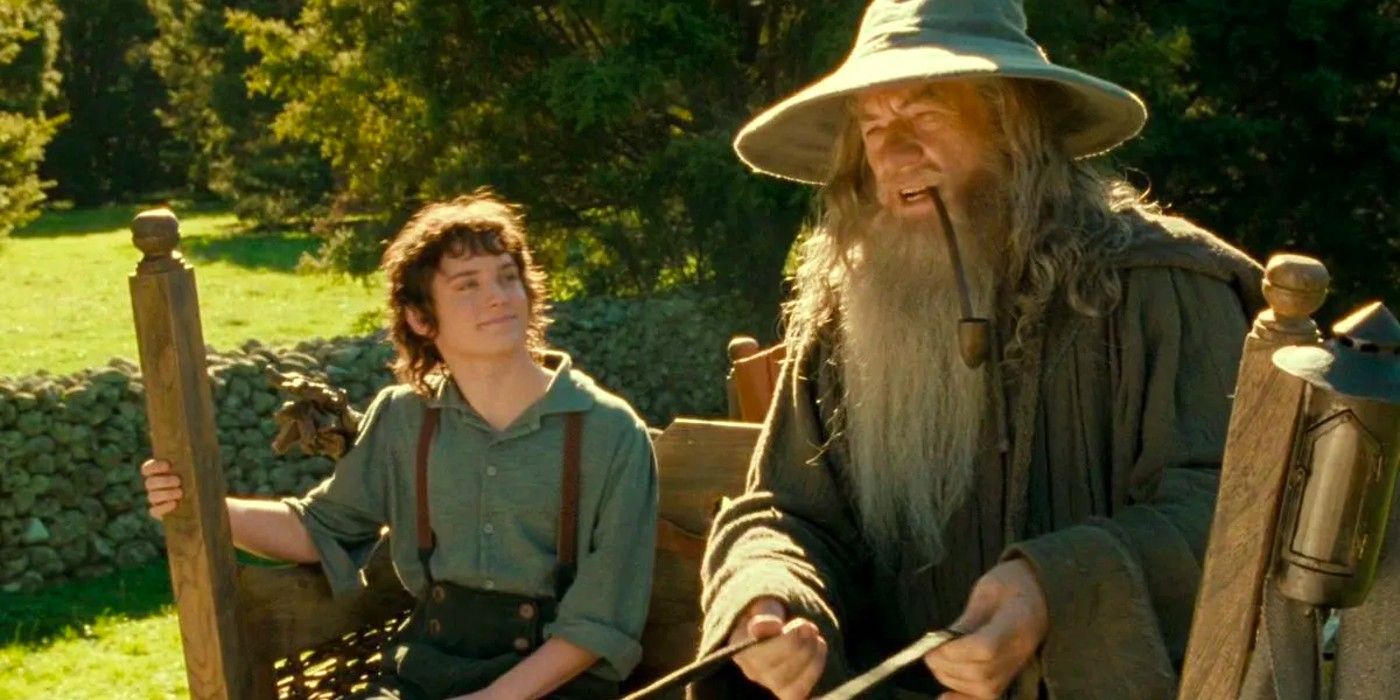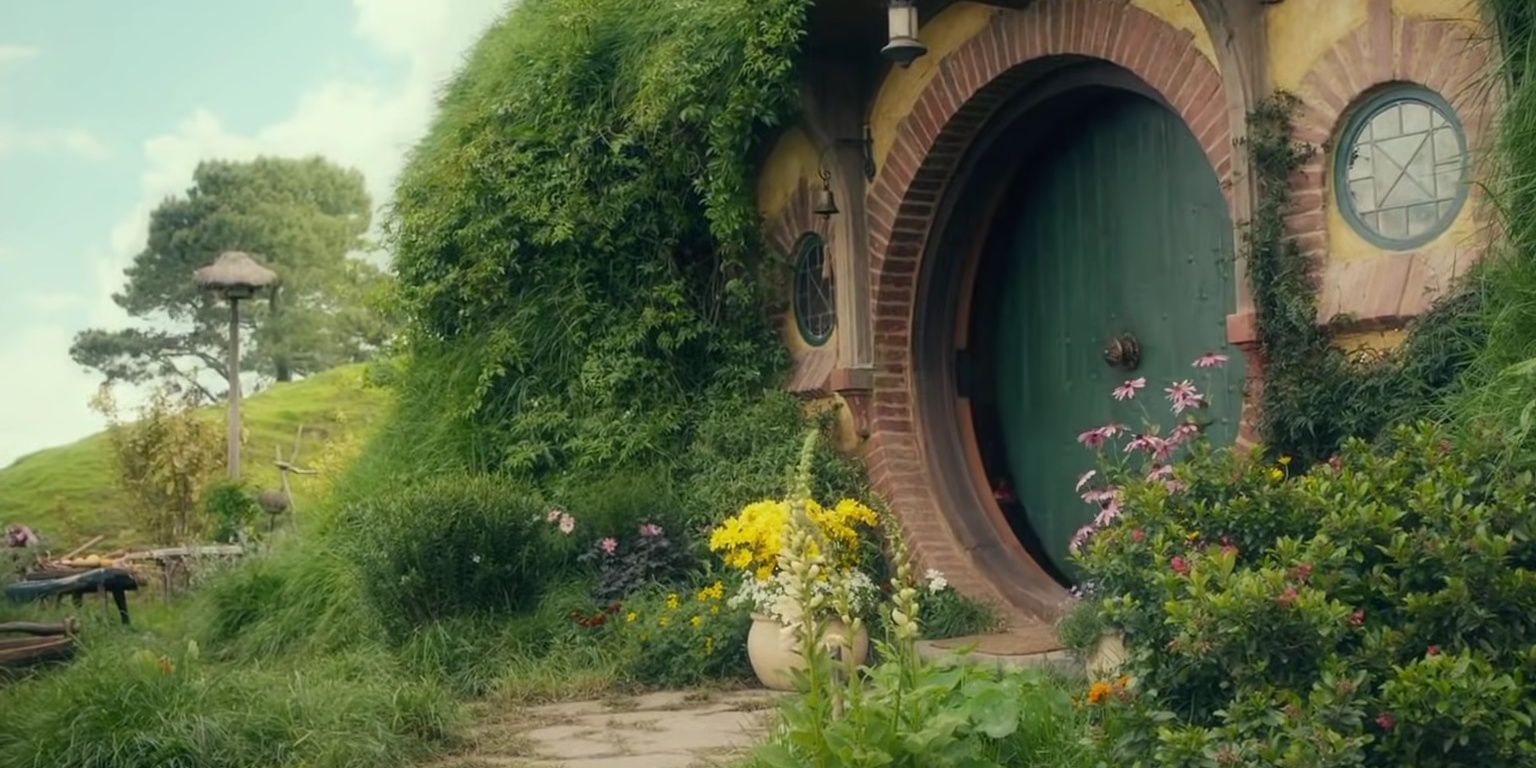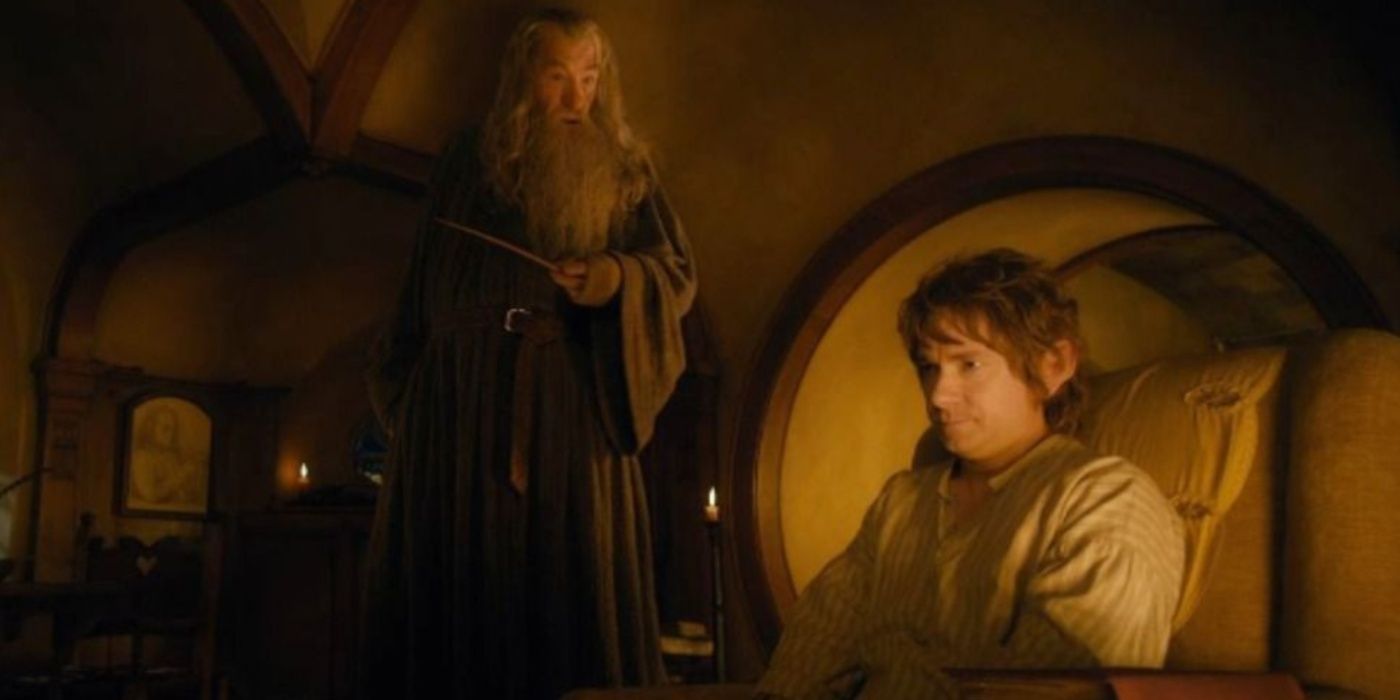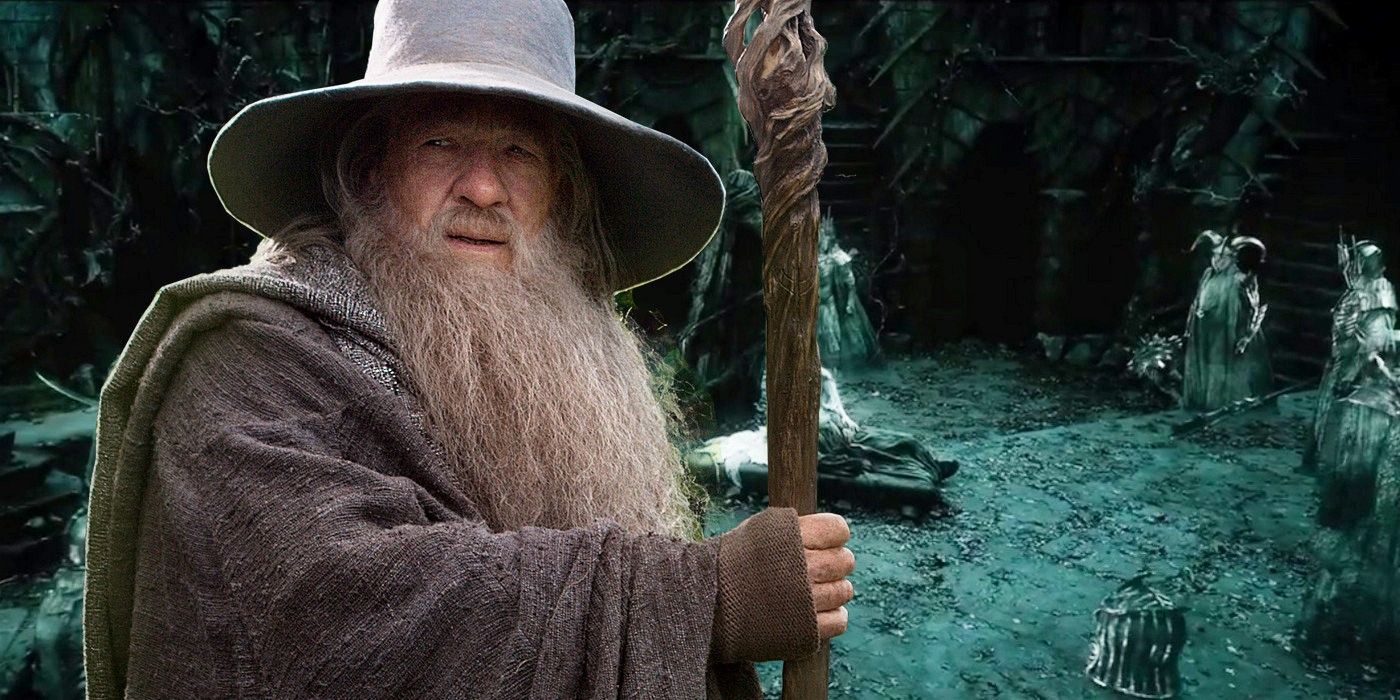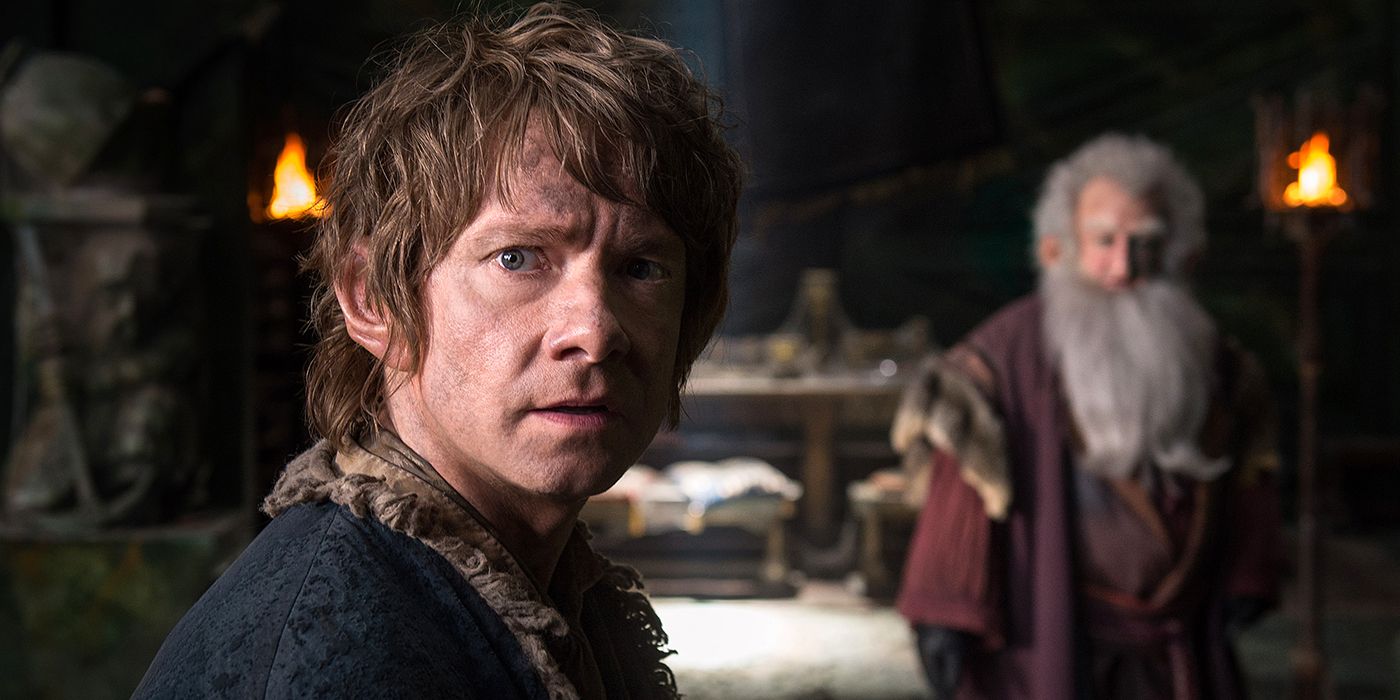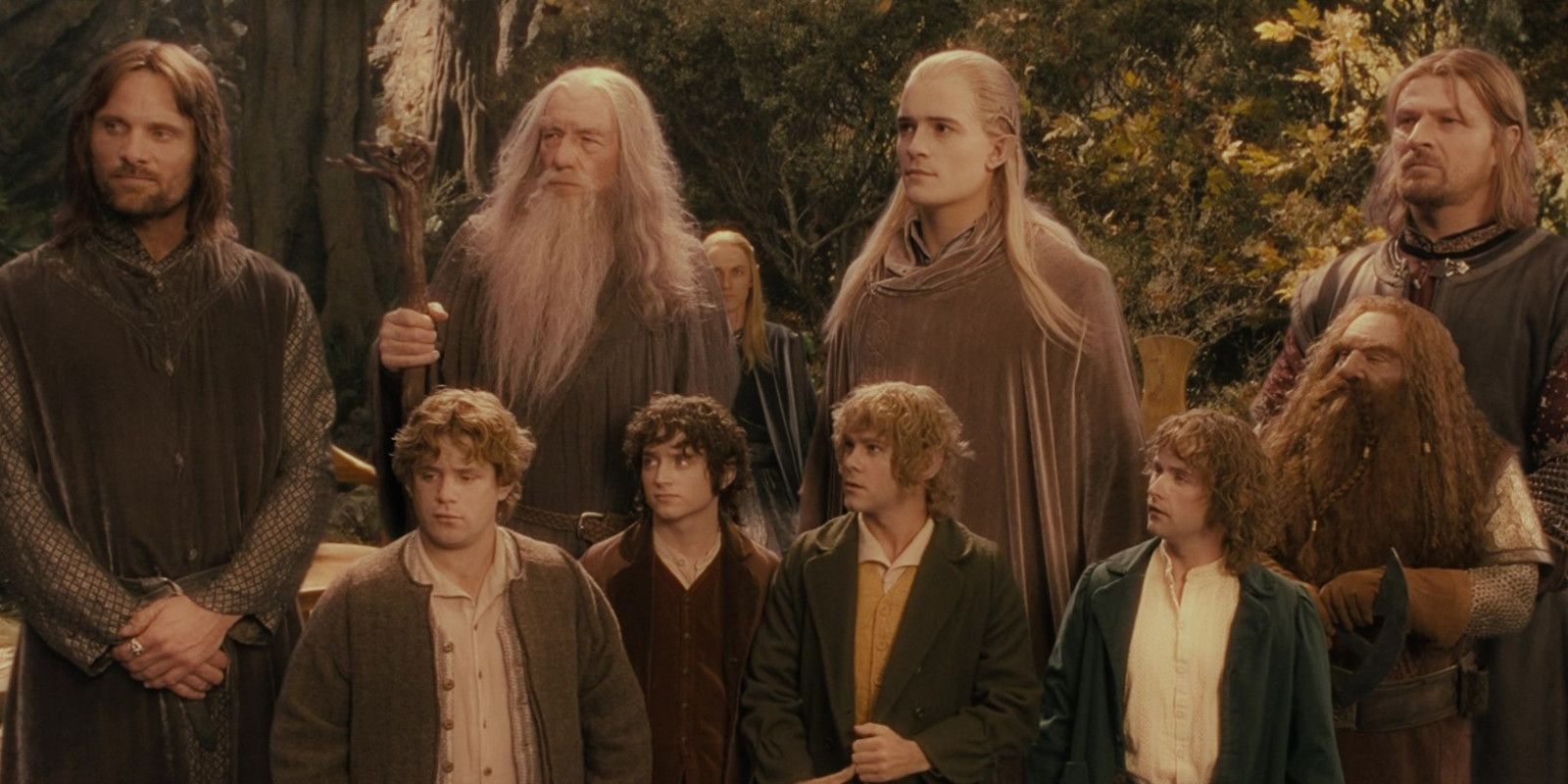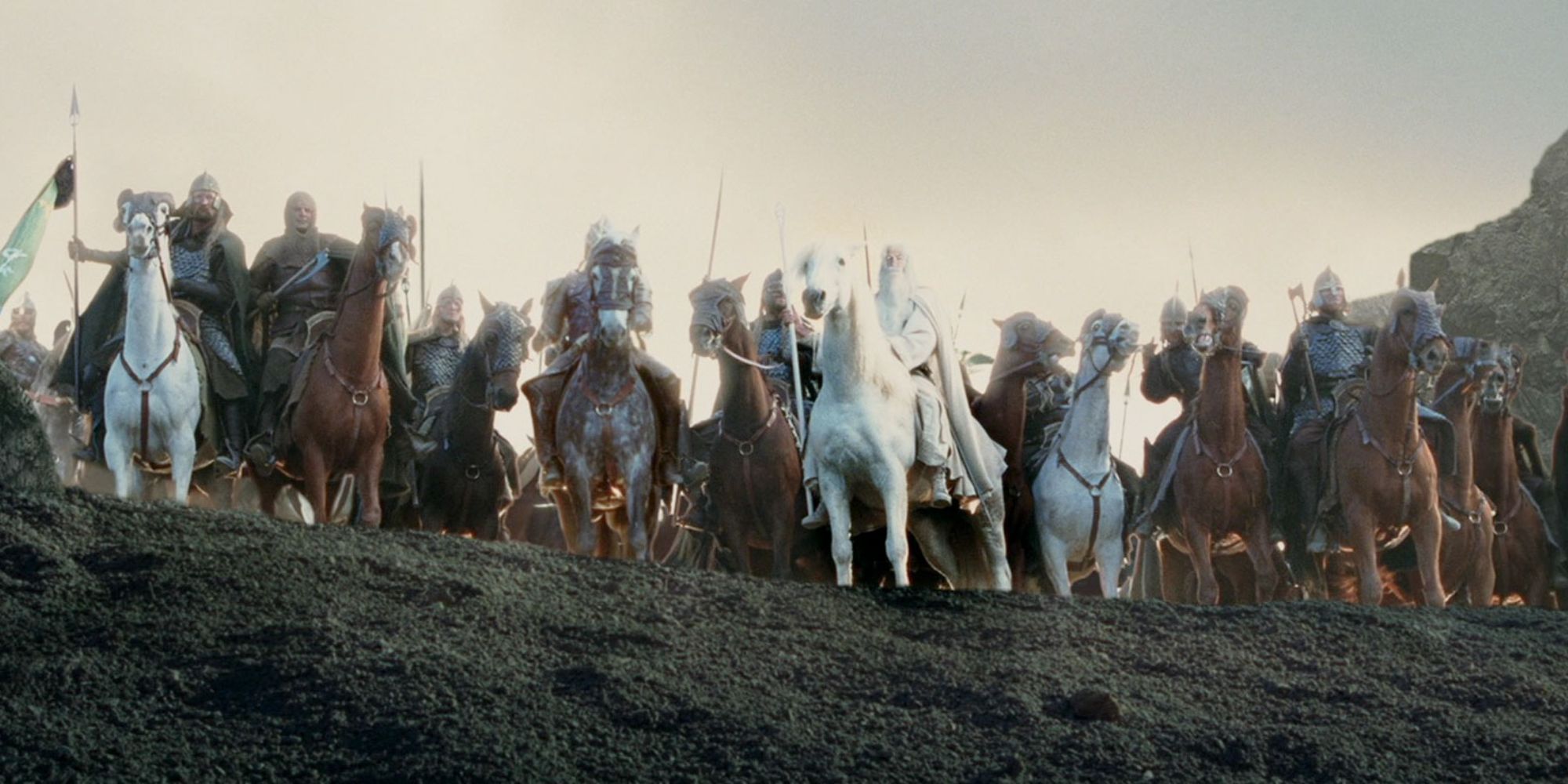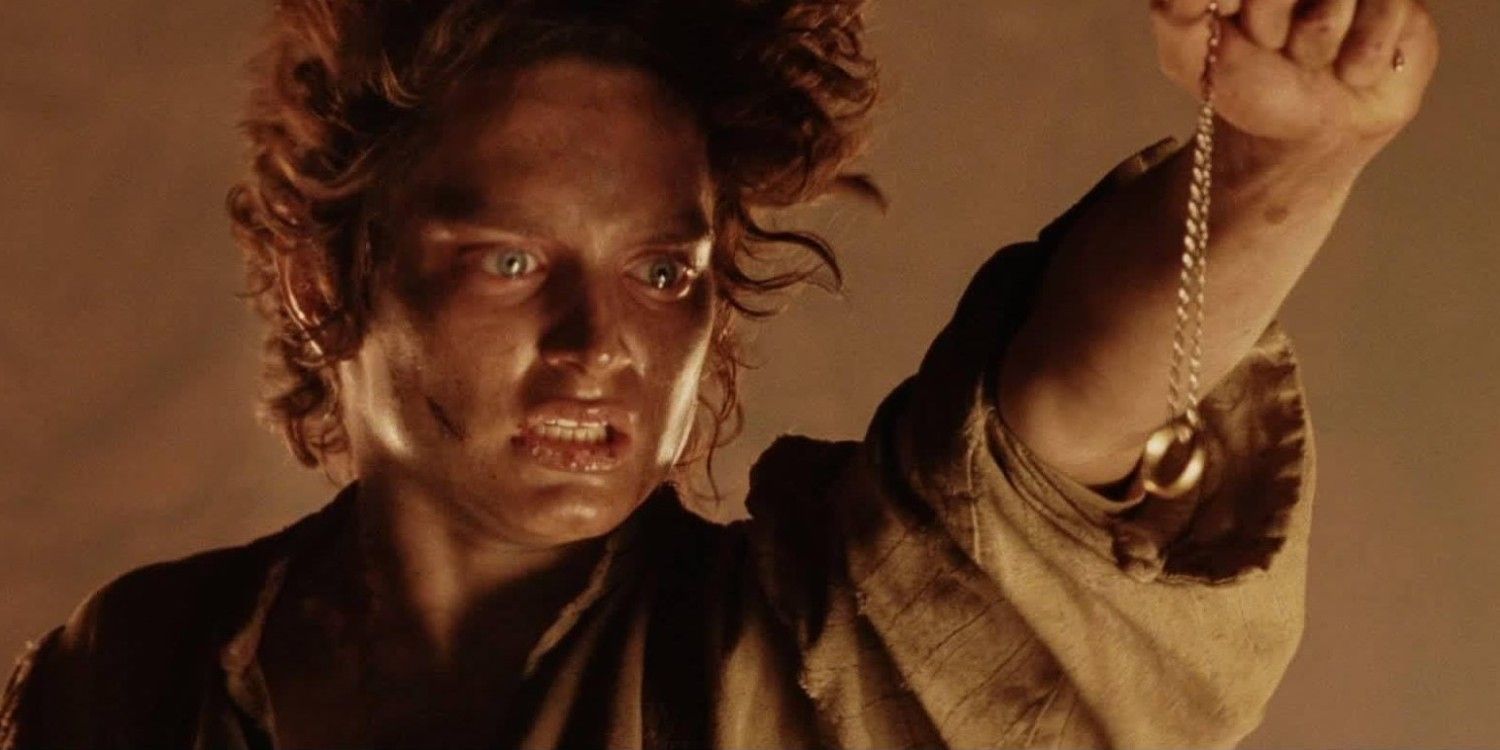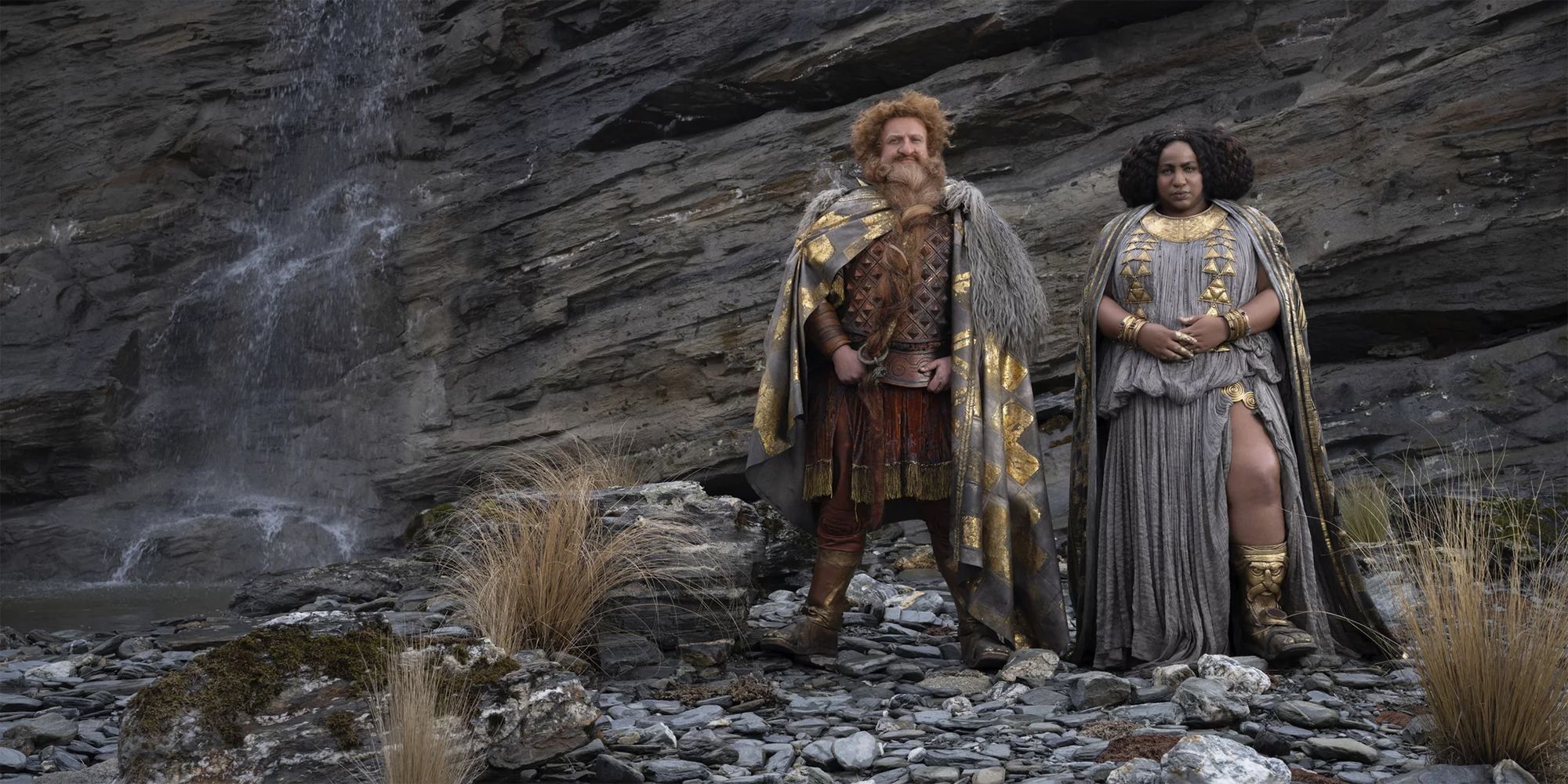Summary
- Watching The Lord of the Rings and The Hobbit in release order is the most authentic way to experience the story as intended by the writers.
- The Hobbit movies assume familiarity with characters from the original trilogy, making them more enjoyable for those with background knowledge of The Lord of the Rings.
- The Rings of Power series takes place before The Lord of the Rings and The Hobbit, following a young Galadriel’s attempt to stop Sauron’s rise to power, but it takes liberties with Tolkien’s writings.
Peter Jackson’s The Lord of the Rings movies make up one of the most popular fantasy series ever put to screen, but there are multiple different viewing orders that make sense for this story. The movies are based on the works of British author J.R.R. Tolkien, whose original fantasy books take place in Middle-earth and follow a wide selection of humans, Elves, Dwarves, and Hobbits as they battle against the dark forces of evil that threaten their universe.
Since Jackson’s two trilogies take place at completely different points in time, audiences are now given a choice regarding how they want to experience this story. There are pros and cons to both viewing orders (release order and chronological order), with each option revealing information at different times and changing the way certain plot twists and surprises work. And with the recent release of The Rings of Power on Amazon Prime Video, the cinematic timeline has become even more complex and non-linear.
The Hobbit & The Lord Of The Rings Movies In Order By Release Date
- The Lord of the Rings: The Fellowship of the Ring (2001)
- The Lord of the Rings: The Two Towers (2002)
- The Lord of the Rings: Return of the King (2003)
- The Hobbit: An Unexpected Journey (2012)
- The Hobbit: The Desolation of Smaug (2013)
- The Hobbit: The Battle of the Five Armies (2014)
Watching The Lord of the Rings and The Hobbit in the order these movies were released is the most authentic way of experiencing the story, with everything happening in the order the writers intended. The characters are introduced when they should be, their arcs happen naturally, and Jackson’s direction guides the audience gently through the story without much confusion. For new audiences, watching The Lord of the Rings in release order undoubtedly makes the most sense.
The importance of this viewing order becomes clear once audiences reach Jackson’s The Hobbit movies. These sequels assume that audiences are already familiar with characters from the original trilogy, including Gandalf, Galadriel, and Saruman, inserting them into this story without much explanation. This is just one of many differences between The Hobbit movies and the book. A good background knowledge of The Lord of the Rings will really help audiences make the most of this trilogy, enabling them to recognize characters and locations as soon as they appear.
The Lord Of The Rings Franchise In Order Of Events
- The Hobbit: An Unexpected Journey (2012)
- The Hobbit: The Desolation of Smaug (2013)
- The Hobbit: The Battle of the Five Armies (2014)
- The Lord of the Rings: The Fellowship of the Ring (2001)
- The Lord of the Rings: The Two Towers (2002)
- The Lord of the Rings: Return of the King (2003)
The Hobbit: An Unexpected Journey (2012)
Cast: Martin Freeman (Bilbo Baggins), Sir Ian McKellen (Gandalf), Richard Armitage (Thorin Oakenshield), Aidan Turner (Kili), Dean O’Gorman (Fili), Lee Pace (Thranduil), Graham McTavish (Dwalin), Ken Stott (Balin), Benedict Cumberbatch (Smaug), Christopher Lee (Saruman), Cate Blanchett (Galadriel), Manu Bennett (Azog)
Runtime: 2 hours and 49 minutes
Box Office: $303 million
The Hobbit: An Unexpected Journey is the first movie in Jackson’s prequel trilogy, and therefore, the first movie in the cinematic timeline. The story follows a young Bilbo Baggins as he’s recruited by Gandalf to reclaim stolen treasure from a dangerous dragon named Smaug who lives in an old mountain. It’s an adaptation of the first act of Tolkien’s novel of the same name, leading up to the gang’s battle with Azog. However, the movie also introduces several storylines that aren’t part of Tolkien’s novel, and it includes the presence of characters such as Galadriel and Saruman.
The Hobbit: The Desolation Of Smaug (2013)
Cast: Martin Freeman (Bilbo Baggins), Sir Ian McKellen (Gandalf), Richard Armitage (Thorin Oakenshield), Evangeline Lilly (Tauriel), Orlando Bloom (Legolas), Aidan Turner (Kili), Dean O’Gorman (Fili), Lee Pace (Thranduil), Graham McTavish (Dwalin), Ken Stott (Balin), Benedict Cumberbatch (Smaug), Manu Bennett (Azog)
Runtime: 2 hours and 41 minutes
Box Office: $258 million
The following movie, The Hobbit: The Desolation of Smaug, takes place moments after the conclusion of An Unexpected Journey, as Bilbo and his friends continue their travels and encounter the evil dragon that’s been guarding the treasure they seek. It picks up right after the gang’s rescue by the eagles and follows them as they arrive at the Lonely Mountain. The film ends with Smaug’s decision to wreak havoc on Laketown as the dwarves arrive to reclaim their home.
The Hobbit: The Battle Of The Five Armies (2014)
Cast: Martin Freeman (Bilbo Baggins), Sir Ian McKellen (Gandalf), Richard Armitage (Thorin Oakenshield), Evangeline Lilly (Tauriel), Orlando Bloom (Legolas), Aidan Turner (Kili), Dean O’Gorman (Fili), Lee Pace (Thranduil), Graham McTavish (Dwalin), Ken Stott (Balin), Manu Bennett (Azog)
Runtime: 2 hours and 24 minutes
Box Office: $255 million
Once again, the final installment in The Hobbit trilogy picks up directly after the conclusion of The Desolation of Smaug, largely following the battle that ensued between the dragon, Bilbo’s company, the Dwarves, the Elves, and several other armies that came to reclaim the land. It’s an exciting conclusion to the trilogy, leading right up to Bilbo’s return to The Shire, where he remains until his appearance in The Fellowship of the Ring. It’s this adventure that Bilbo is seen writing about at the beginning of the first Lord of the Rings movie.
The Lord Of The Rings: The Fellowship Of The Ring (2001)
Cast: Elijah Wood (Frodo Baggins), Sir Ian McKellen (Gandalf), Viggo Mortensen (Aragorn), Orlando Bloom (Legolas), John Rhys-Davies (Gimlee) Sean Astin (Samwise Gamgee), Sean Bean (Boromir), Christopher Lee (Saruman), Dominic Monaghan (Brandybuck), Billy Boyd (Pippin Took)
Runtime: 2 hours and 58 minutes
Box Office: $898 million
The Lord of the Rings trilogy takes place 60 years after The Hobbit, following Bilbo’s cousin, Frodo, as he attempts to destroy the One Ring that Bilbo uncovered during the earlier story. This film introduces audiences to most of the series’ important characters, sending them off on their adventure and building the relationships that will be followed for the remainder of the trilogy. The Fellowship of the Ring‘s ending sees Frodo and Sam splitting up from the group as their friends attempt to rescue Merry and Pippin from the Orcs.
The Lord Of The Rings: The Two Towers (2002)
Cast: Elijah Wood (Frodo Baggins), Sir Ian McKellen (Gandalf), Viggo Mortensen (Aragorn), Orlando Bloom (Legolas), John Rhys-Davies (Gimlee) Sean Astin (Samwise Gamgee), Andy Serkis (Gollum), Christopher Lee (Saruman), Dominic Monaghan (Brandybuck), Billy Boyd (Pippin Took)
Runtime: 2 hours and 59 minutes
Box Office: $948 million
The Two Towers bridges the gap between the first and final Lord of the Rings movies, splitting up the Fellowship and introducing several new locations on the road to Mordor. The story is mostly split into three parts: Frodo and Sam’s journey to Mordor with Gollum, Merry and Pippin’s interactions with the Ents, and the remaining heroes’ attempts to save Rohan from Sauron’s armies. The story culminates with the famous Battle of Helm’s Deep, which sets the stage for the last installment of the trilogy.
The Lord Of The Rings: Return Of The King
Cast: Elijah Wood (Frodo Baggins), Sir Ian McKellen (Gandalf), Viggo Mortensen (Aragorn), Orlando Bloom (Legolas), John Rhys-Davies (Gimlee) Sean Astin (Samwise Gamgee), Andy Serkis (Gollum), Christopher Lee (Saruman), Dominic Monaghan (Brandybuck), Billy Boyd (Pippin Took)
Runtime: 3 hours and 21 minutes
Box Office: $1.15 billion
Return of the King is the final entry in Peter Jackson’s Lord of the Rings trilogy, and as such, the final chronological entry in this cinematic universe. The story follows Frodo and his friends as they battle against Sauron and eventually destroy the One Ring, bringing peace back to Middle-Earth. Return of the King wraps the story up perfectly, and it went on to win Best Picture at the Academy Awards.
How The Rings Of Power Fits Into The Lord Of The Rings Franchise
The Rings of Power is a series that takes place long before The Lord of the Rings and The Hobbit, during the First Age of Middle-earth. It follows a much younger version of Galadriel as she attempts to stop Sauron’s rise to power, which ties neatly into the movies that follow many years later. Although The Rings of Power technically isn’t an official prequel, it works within the timeline of Jackson’s films, as it’s still following Tolkien’s history of Middle-earth. However, the series takes liberties with Tolkien’s writings, so it’s hard to say if it’s as faithful as the Lord of the Rings movies.
The first season of The Rings of Power stars Morfydd Clark as Galadriel, Robert Aramayo as Elrond, Charlie Vickers as Halbrand, Maxim Baldry as Isildur, and Ismael Cruz Cordova as Arondir. The Rings of Power is a big change from The Lord of the Rings, and it has plans to continue for several more seasons. Whether it will become as highly regarded as the movies remains to be seen, but it’s certainly doing a good job of expanding upon Tolkien’s vast lore.


